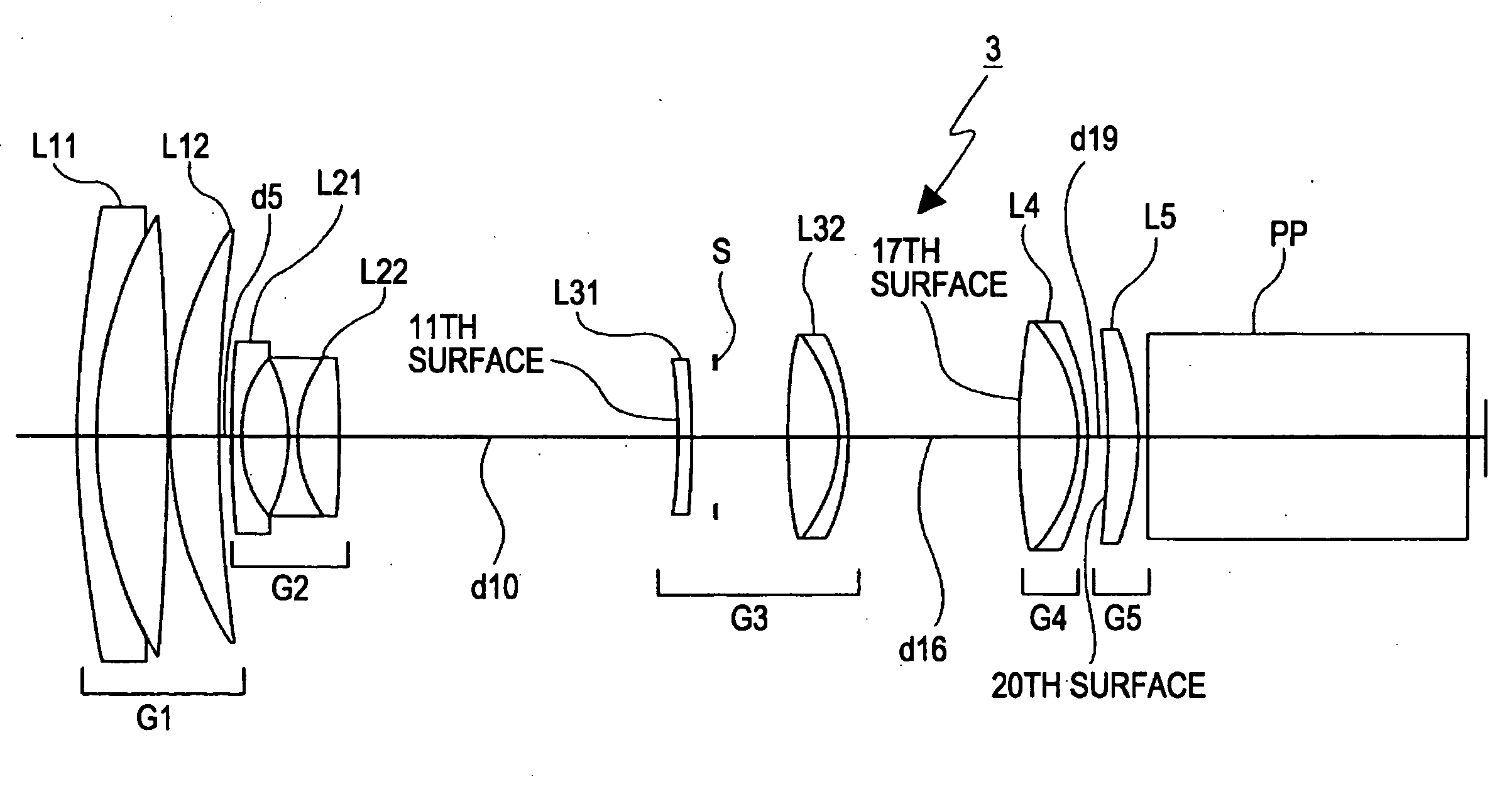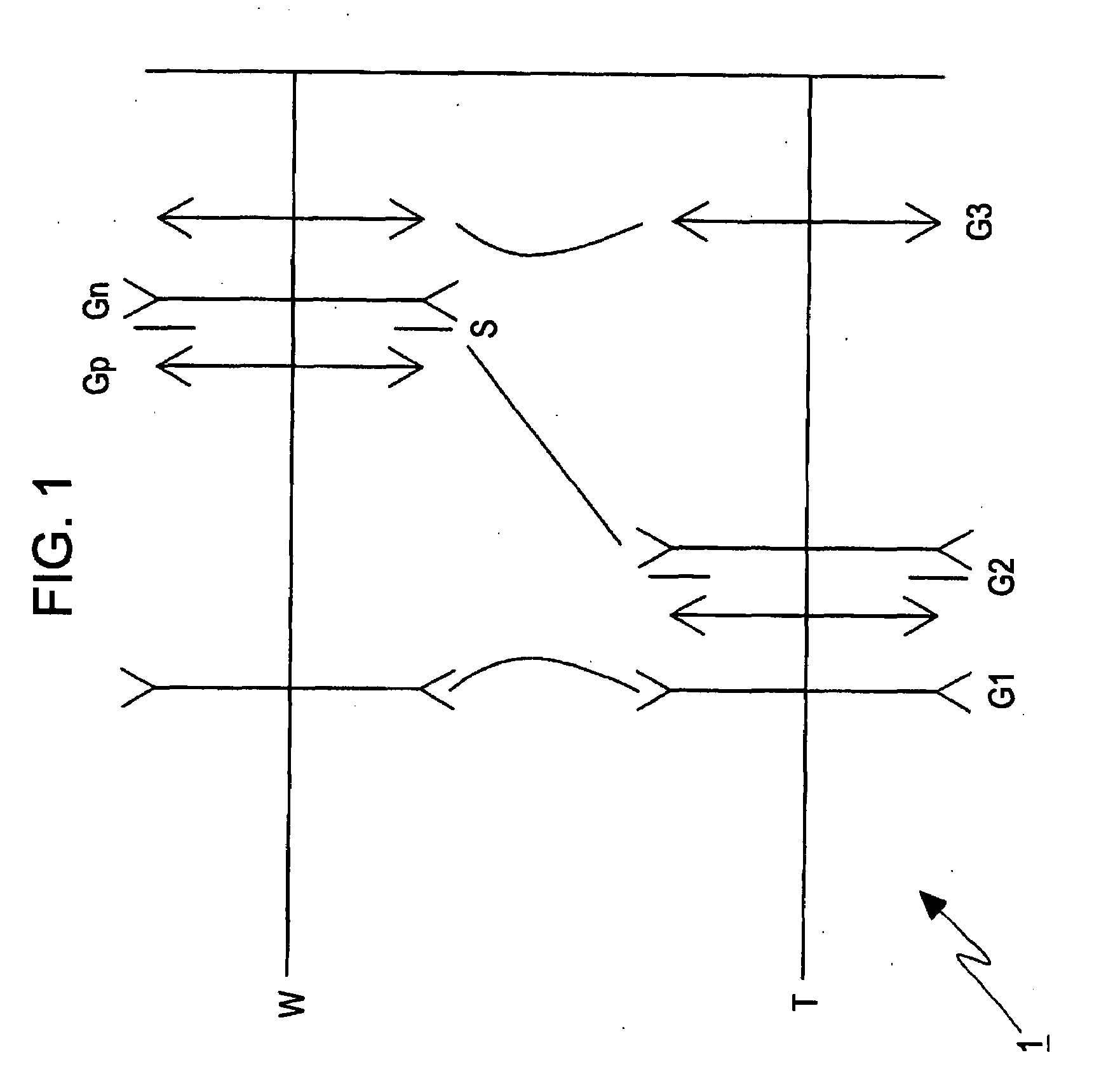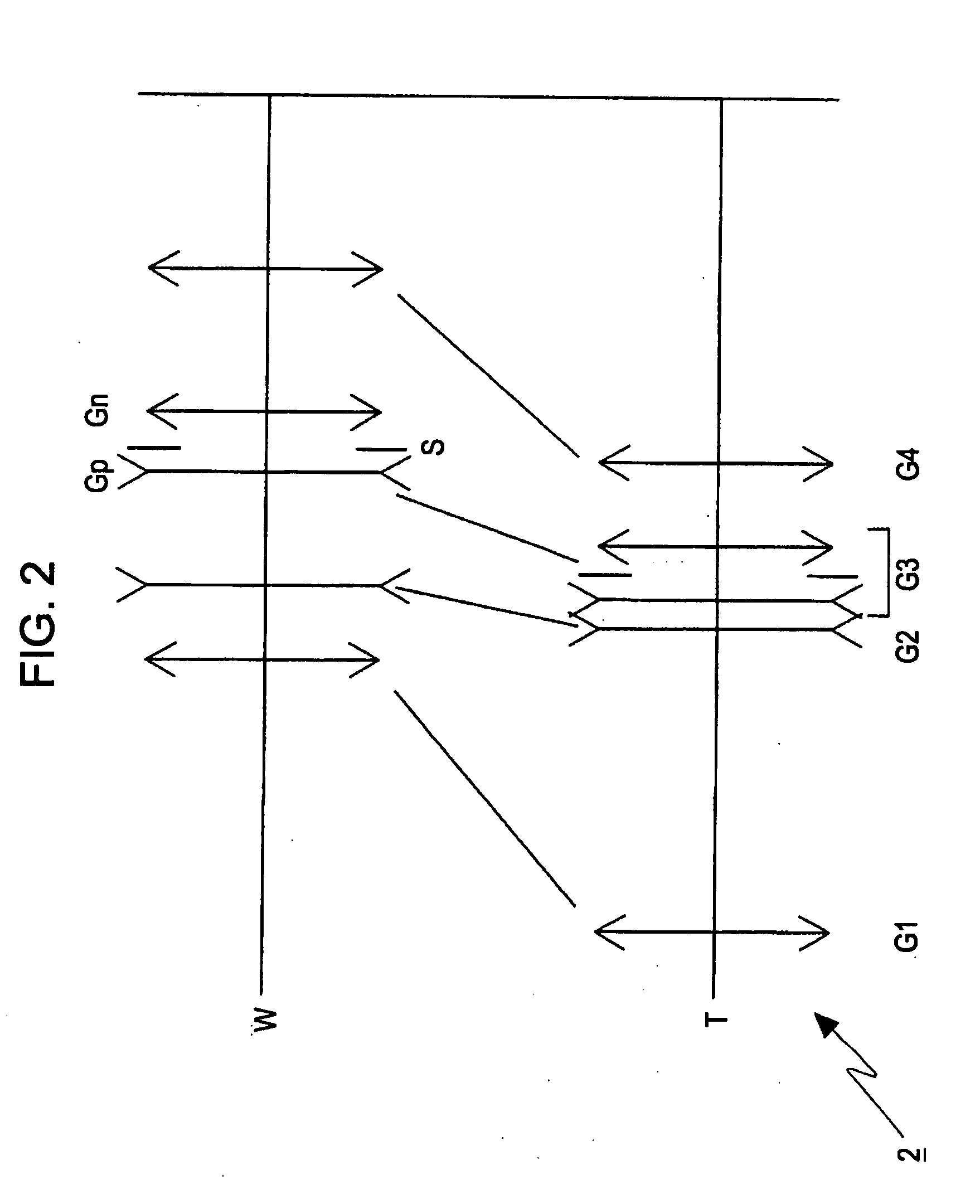Zoom lens and image capturing apparatus
- Summary
- Abstract
- Description
- Claims
- Application Information
AI Technical Summary
Benefits of technology
Problems solved by technology
Method used
Image
Examples
first embodiment
[0074]FIG. 1 is a schematic illustration of a refractive power arrangement diagram of a zoom lens 1 including three lens groups according to the present invention.
[0075]The zoom lens 1 includes three lens groups: a first lens group G1 having a negative refractive power, a second lens group G2 having a positive refractive power, and a third lens group G3 having a positive refractive power disposed in this order from the object side. The second lens group G2 that serves as a shift lens group includes a positive subgroup Gp having a positive refractive power, an aperture stop S, and a negative subgroup Gn having a negative refractive power disposed in this order from the object side. When the focal length changes from the wide-angle setting in which the focal length is the shortest (a setting indicated by a reference symbol W in the upper section of FIG. 1) to the telephoto setting in which the focal length is the longest (a setting indicated by a reference symbol T in the lower sectio...
second embodiment
[0077]FIG. 2 is a schematic illustration of a refractive power arrangement diagram of a zoom lens 2 including four lens groups according to the present invention.
[0078]The zoom lens 2 includes four lens groups: a first lens group G1 having a positive refractive power, a second lens group G2 having a negative refractive power, a third lens group G3 having a positive refractive power, and a fourth lens group G4 having a positive refractive power disposed in this order from the object side. The third lens group G3 that serves as a shift lens group includes a negative subgroup Gn having a negative refractive power, an aperture stop S, and a positive subgroup Gp having a positive refractive power disposed in this order from the object side.
[0079]When the focal length changes from the wide-angle setting in which the focal length is the shortest (a setting indicated by a reference symbol W in the upper section of FIG. 2) to the telephoto setting in which the focal length is the longest (a ...
third embodiment
[0080]FIG. 3 is a schematic illustration of a refractive power arrangement diagram of a zoom lens 3 including five lens groups according to the present invention.
[0081]The zoom lens 3 includes five lens groups: a first lens group G1 having a positive refractive power, a second lens group G2 having a negative refractive power, a third lens group G3 having a positive refractive power, a fourth lens group G4 having a positive refractive power, and a fifth lens group G5 having a positive refractive power arranged in this order from the object side. When the lens position setting changes from the wide-angle setting (a setting indicated by a reference symbol W in the upper section of FIG. 3) to the telephoto setting (a setting indicated by a reference symbol T in the lower section of FIG. 3), the first lens group G1 remains stationary along the optical axis, the second lens group G2 is moved towards the image side, and the third lens group G3 remains stationary along the optical axis. In ...
PUM
 Login to view more
Login to view more Abstract
Description
Claims
Application Information
 Login to view more
Login to view more - R&D Engineer
- R&D Manager
- IP Professional
- Industry Leading Data Capabilities
- Powerful AI technology
- Patent DNA Extraction
Browse by: Latest US Patents, China's latest patents, Technical Efficacy Thesaurus, Application Domain, Technology Topic.
© 2024 PatSnap. All rights reserved.Legal|Privacy policy|Modern Slavery Act Transparency Statement|Sitemap



